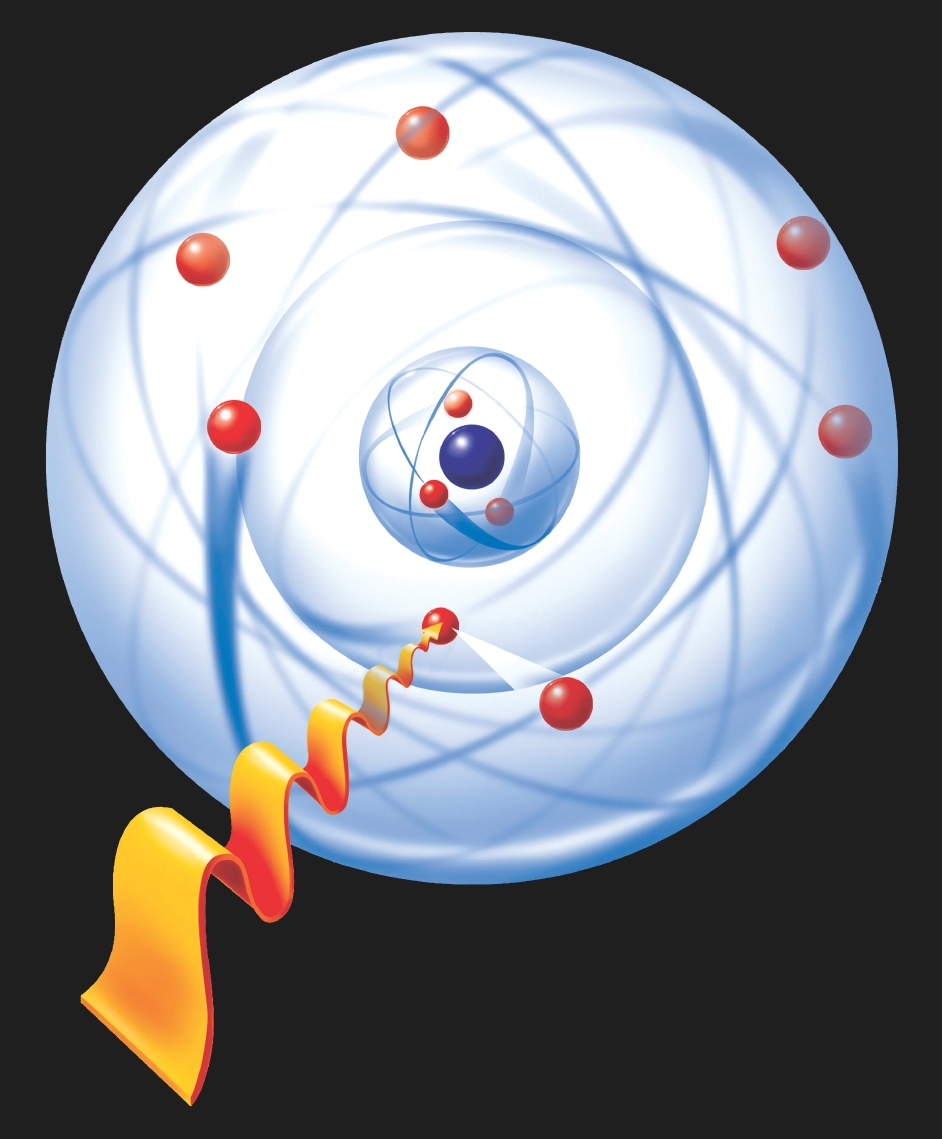Inside an atom

[fototag id=”insideanatom”]
At the centre of every atom is a nucleus containing protons and neutrons. Together, protons and neutrons are known as nucleons. Around this core of the atom, a certain number of electrons orbit in shells. The nucleus and electrons are referred to as subatomic particles. The electrons orbit around the centre of the atom due to the charges present; protons have a positive charge, neutrons are neutral and electrons have a negative charge. It is the electromagnetic force that keeps the electrons in orbit due to these charges, one of the four fundamental forces of nature. It acts between charged objects – such as inside a battery – by the interaction of photons, which are the basic units of light.
An atom is about one tenth of a nanometre in diameter. 43 million iron atoms lined up side by side would produce a line only one millimetre in length. However, most of an atom is empty space. The nucleus of the atom accounts for only a 10,000th of the overall size of the atom, despite containing almost all of the atom’s mass. Protons and neutrons have about 2,000 times more mass than an electron, which results in the electrons orbit the nucleus at a large distance as they in turn have an extremely low mass.
An atom represents the smallest part of an element that can exist by itself. Each element’s atoms have a different structure. The number of protons inside a specific element is unique. For example, carbon has six protons whereas gold has 79. However, some elements have more than one form. The other forms – known as isotopes – will have the same number of protons but a different number of neutrons. For example, hydrogen has three forms which all have one proton; tritium has two neutrons, deuterium has one neutron and hydrogen itself has none.
As different atoms have different numbers of protons and neutrons, they also have different masses, which determine the properties of an element. The larger the mass of an atom the smaller its size, as the electrons orbit more closely to the nucleus due to a stronger electromagnetic force. For example an atom of sulphur, which has 16 protons and 16 neutrons, has the same mass as 32 hydrogen atoms, which each have one proton and no neutrons.
(Image credit: Science Photo Library)





